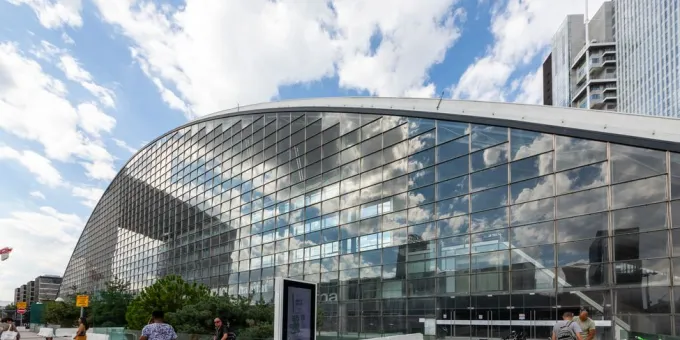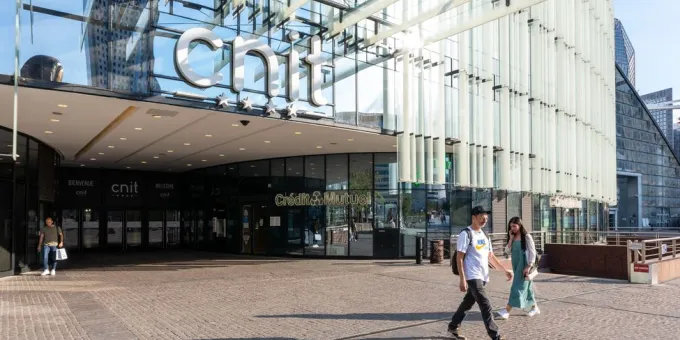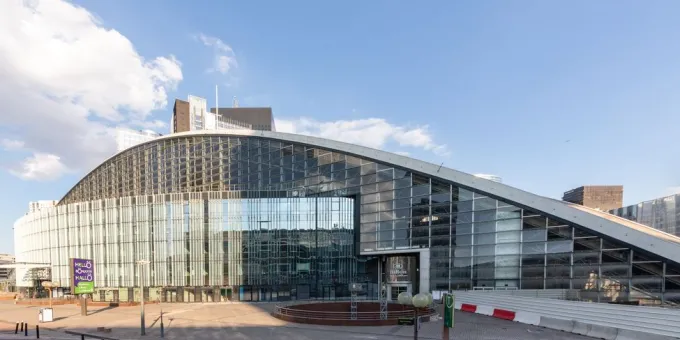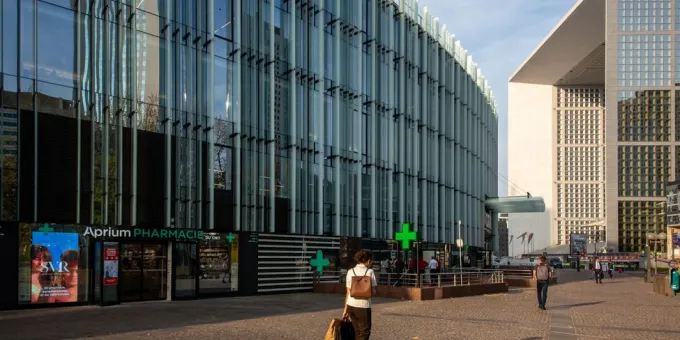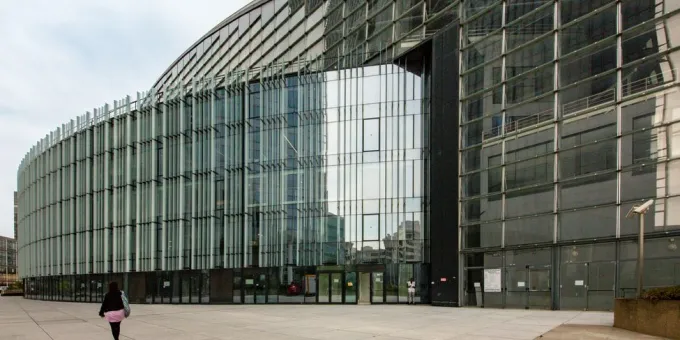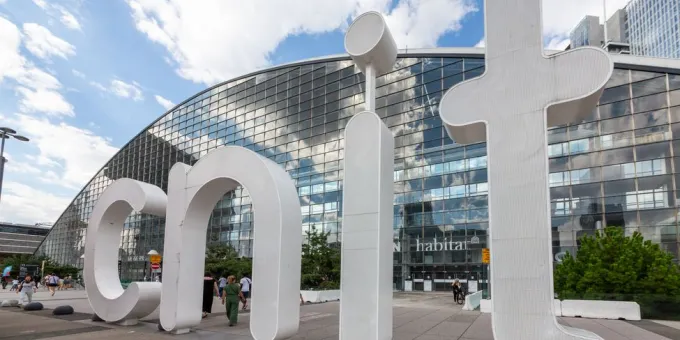Westfield CNIT
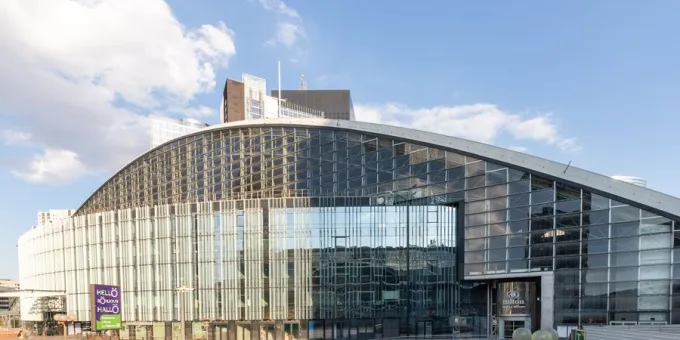
Westfield CNIT
Year of construction: 1958
Year of renovation: 1989 and 2009
Architects: Robert Camelot, Jean De Mailly, and Bernard Zerhfuss
Renovation architects (2009): BCA Brullman Crochon & Associés
Surface area: 200,000 m²
Height: 50 m, 13 floors
Address: 2 parvis de La Défense - 92800 Puteaux
Nearest parking: Centre - Grande Arche
Nearest transport: La Défense (Grande Arche)
A true icon of post-war French engineering and architecture, the National Center for Industry and Technology remains a landmark in La Défense. It was the first building constructed on the site, inaugurated on September 12, 1958. Already commissioned to study the development of the new district, Jean de Mailly, Robert Camelot, and Bernard Zehrfuss, all three winners of the Grand Prix de Rome, took charge of its architectural design. This work was carried out in collaboration with engineers such as Bernard Lafaille.
The team developed a design for a vast vault resting on three support points and covering the triangular space of the site. A double shell, consisting of two 6cm-thick sails, was then created to symbolize this vault. With a span of 218 meters, the structure far exceeds that of the hangars at Marignane Airport. The facades, 206 meters long, are entirely glazed.
During the first renovation in 1989, the Westfield CNIT was split into two parts to house a shopping center and a business center, making it difficult to understand. The final phase of work was then launched to facilitate access. The office ring was split, the area around the building was cleared, and direct access to the RER was created.
Originally designed as an exhibition hall to replace the Grand Palais, Westfield CNIT has since been transformed into a tertiary space. In 2009, it underwent restructuring work to create a multifunctional real estate complex of more than 100,000 m², housing offices, shops, conference and exhibition rooms, and a 4-star hotel. The architects responsible for the restructuring were BCA Brullman Crochon & Associés.
The new CNIT was inaugurated on October 21, 2009. In 2024, following renovation work, the CNIT changed its name to Westfield CNIT and opened 45 new stores.
A word about architects
Winner of the Second Grand Prix de Rome in 1933, Robert Camelot (1903-1992) worked in Paris until 1977. In collaboration with Jacques and Paul Herbé, he worked on the pavilion for the Manufacture nationale de Sèvres at the 1937 Paris Exposition, among other projects. After the war, he designed urban plans for cities such as Reims, Nanterre, and Lisieux. From the 1950s onwards, he participated in the design of La Défense alongside Jean de Mailly and Bernard Zehrfuss. He is also considered the “father” of the first generation of towers and the residences known as the “Palais Royal.”
Winner of the Grand Prix de Rome in 1945, Jean de Mailly (1911-1975) began his career with the reconstruction of the port of Toulon. Responsible for the conservation of the Palais de Chaillot, he quickly became one of the emblematic figures of French modernism, combining classical architectural culture with functionalist theories. He exported this concept to La Défense, where he was involved in several projects: CNIT, the Bellini residence, a telephone exchange, etc. In addition to architecture, Jean de Mailly was also a painter.
Bernard Zehrfuss (1911-1996) won the Grand Prix de Rome in 1939. Until 1948, he worked mainly in Tunisia and Algeria. Upon his return to France, he focused on the industrialization of housing while designing the UNESCO headquarters in Paris, which he continued to expand until 1978. In 1950, Bernard Zehrfuss was asked to develop the La Défense area. He then carried out a single project: the CNIT. Aware of the difficulties involved in designing architecture for such a site, he withdrew from the trio he formed with Jean de Mailly and Robert Camelot. Ber
